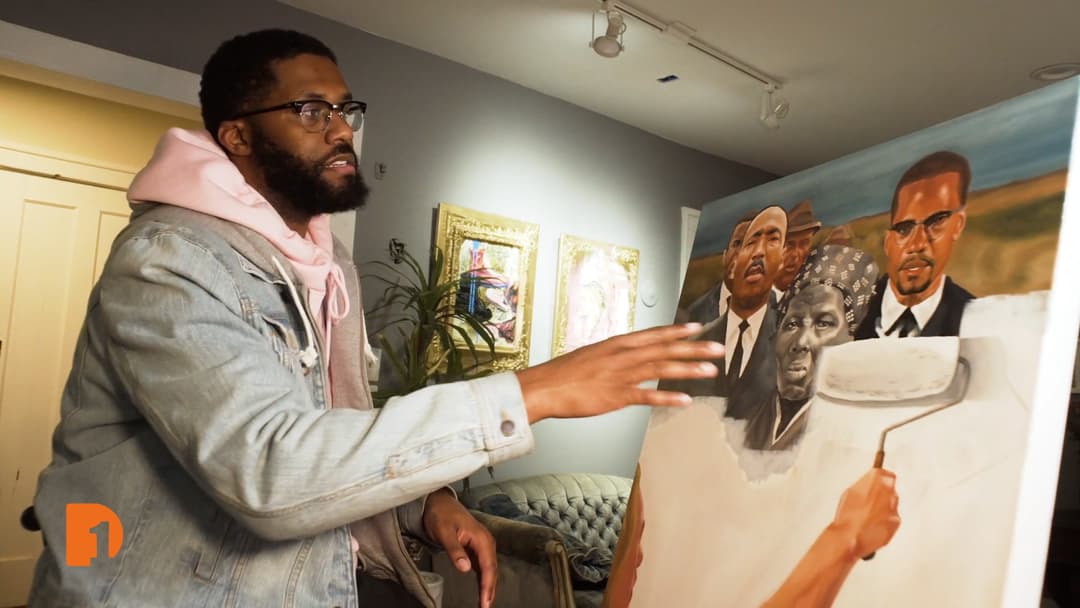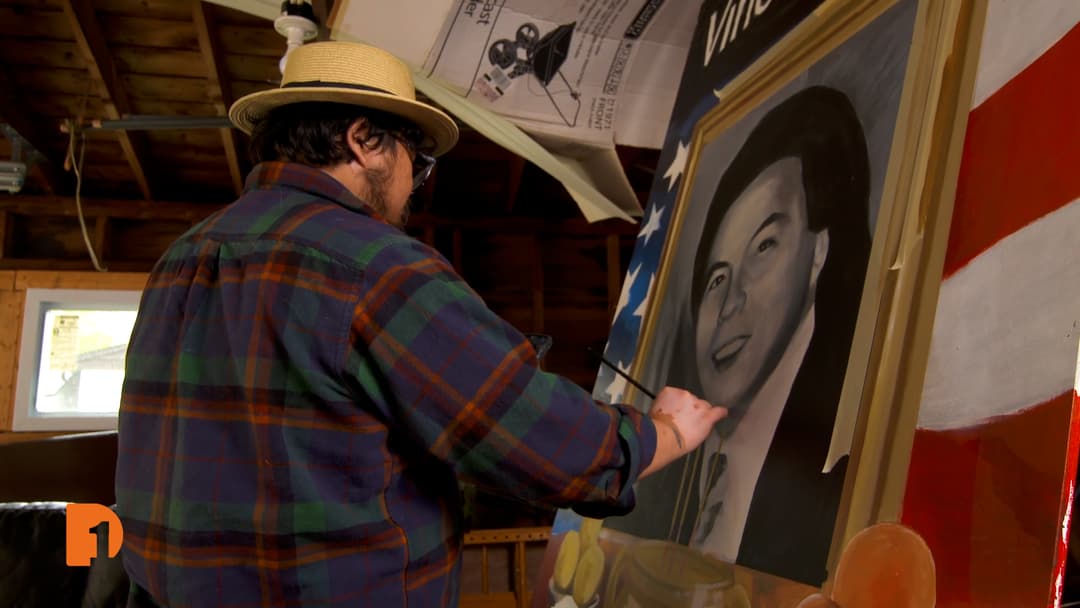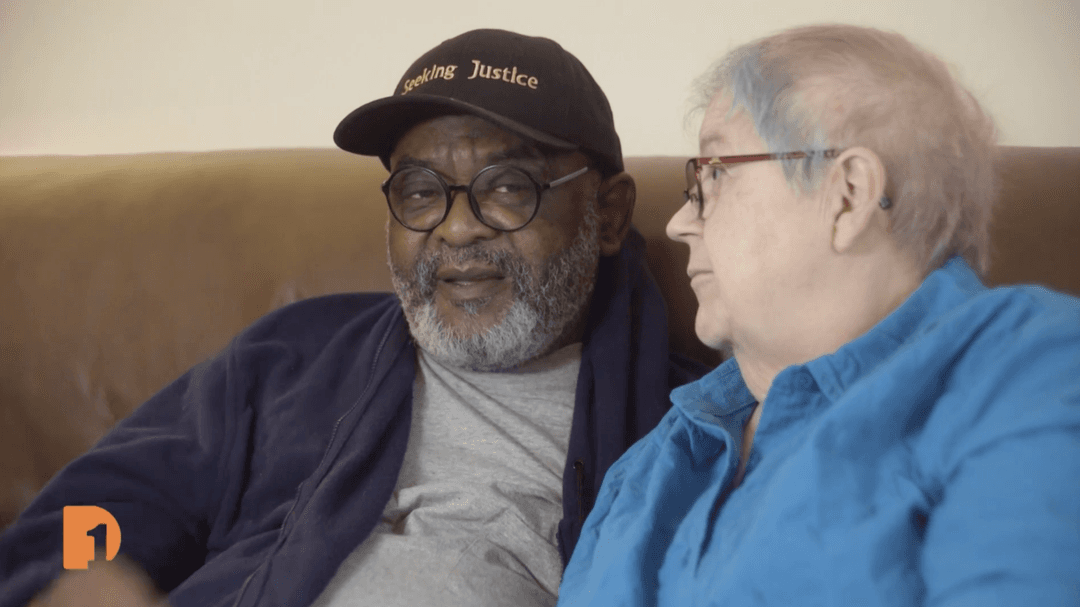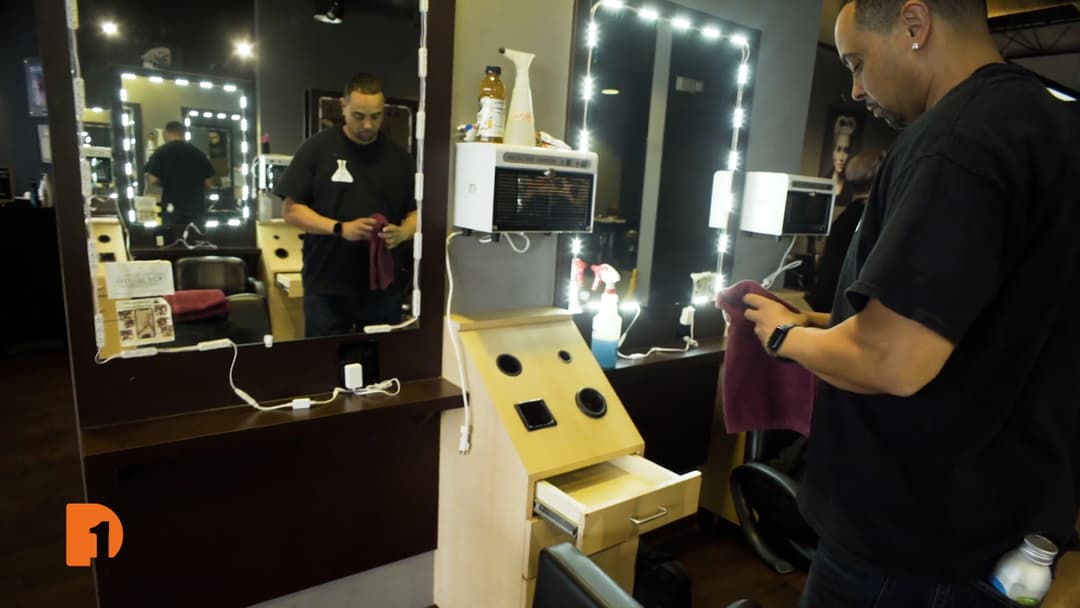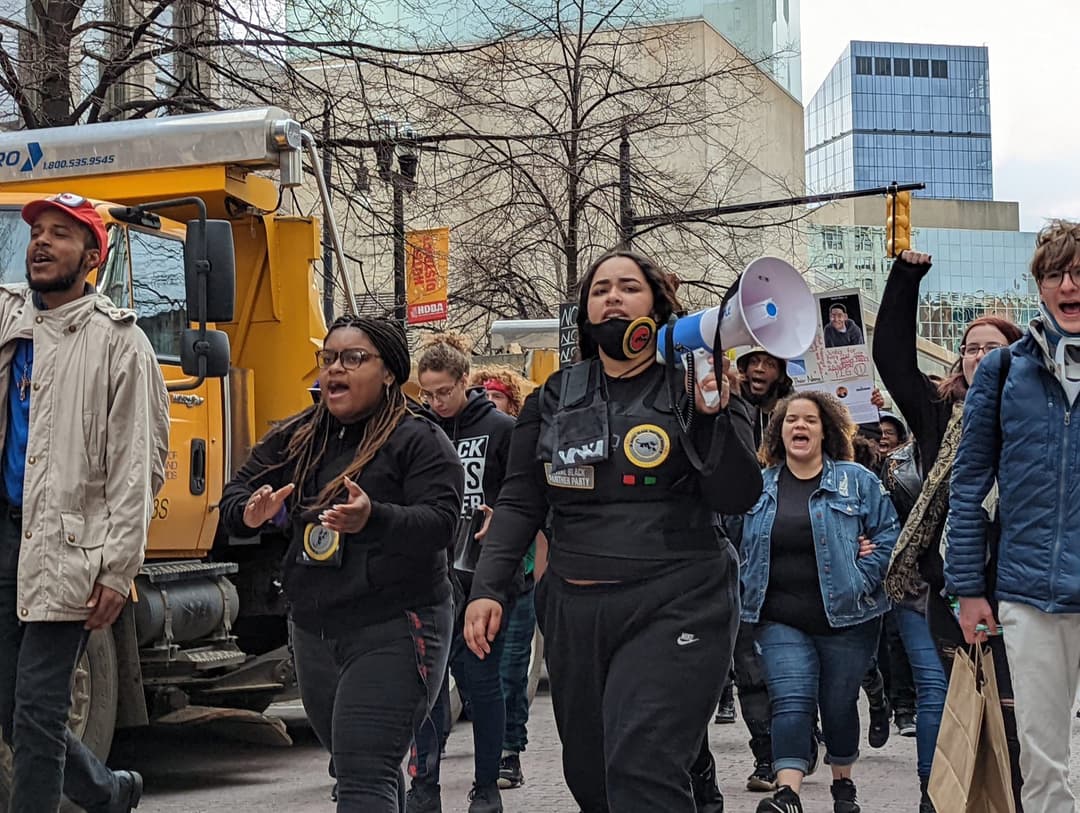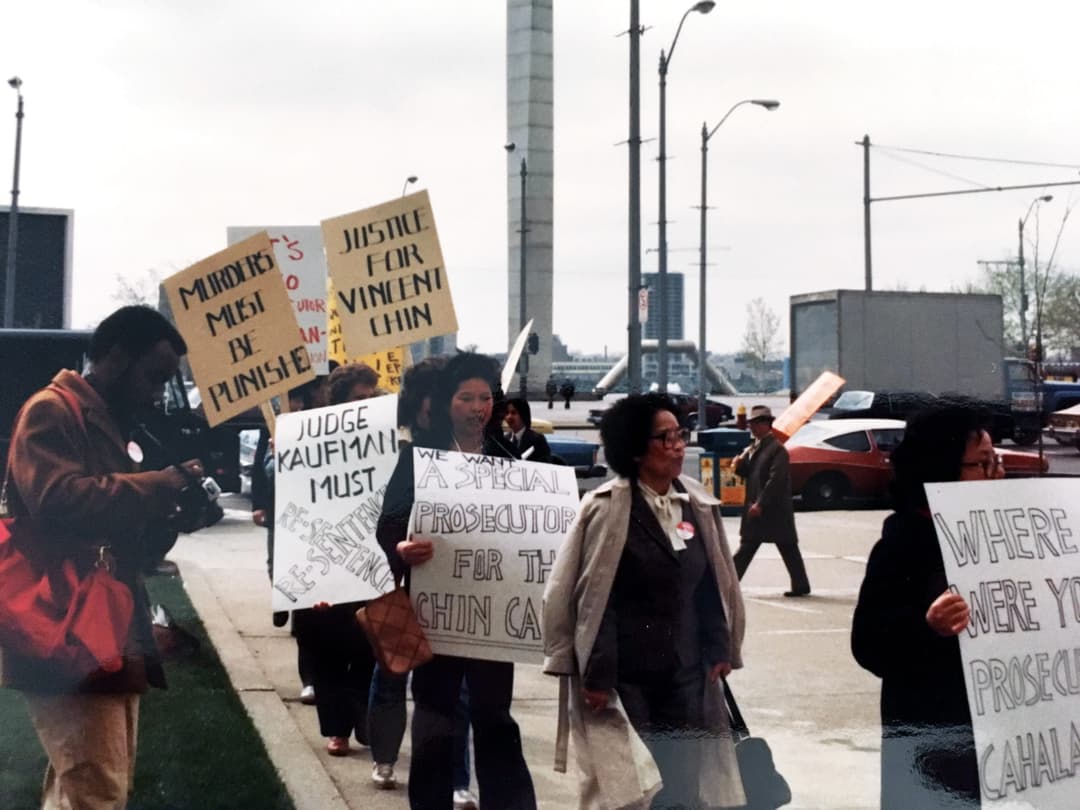Ray Gray, One of Michigan’s Longest-Serving Inmates, is Free
Jan 27, 2022
Originally published on June 16, 2021
It was May 25, 2021 when Ray Gray finally walked out of Muskegon Correctional Facility a free man, 48 years after he was sentenced for a murder conviction, though his family, friends and supporters still argue he’s innocent. Gray agreed to a no contest plea to end his nearly half-century behind bars. One Detroit first told Gray’s story in 2020, when he was featured as an acclaimed incarcerated artist fighting for his innocence.
Now, upon his release, Gray celebrates with his wife and a trip to the art supply store. Gray plans to continue painting he said, with new themes likely to emerge in his work because of his freedom. One Detroit’s Bill Kubota caught up with Gray to talk about his time in prison during the pandemic, how he’s re-adjusting to the outside world, and how he and others continue to fight for justice and his innocence.
Watch Now:
[et_pb_video src=”https://www.youtube.com/watch?v=gcUK8oWjX6U” _builder_version=”4.14.5″ _module_preset=”default” global_colors_info=”{}”]
Full Transcript:
*Late May: Muskegon. Ray Gray checks out of state prison after a 48 year stay, although he’s always maintained they had the wrong man. Days later, Gray and his wife, Barbara, talk about his release to attorney and podcast host Mike Morse.
Mike Morse, Mike Morse Law Firm: If you would have lied 10-20 years ago and told the parole board or somebody that you were involved, do you think you would have gotten out sooner?
Ray Gray: Yes, in fact, I was offered a plea, a 10 to 20, but I refused it, you know, and after bowing out to them that. My position of innocence has never been helpful. You know, it’s a matter of principle, and I realized that a lot of people that the man you’re crazy for holding on to that.
Gray agreed to a no contest plea, still not admitting guilt for that murder a half century ago.
Ray Gray: With this situation, they made some adjustments to get me out. I won’t say it was making a deal with the devil or nothing, but it was a situation where I couldn’t just say I did something I didn’t do.
We first told you Gray’s story on One Detroit last fall. An acclaimed artist behind bars with friends on the outside who believed in his innocence.
Ray Gray: Art has helped a lot. That was sort of like my salvation and her, you know?
Ray met Barbara in the late 70s. She was an art teacher working with inmates back then.
Barbara Gray: In the last year and a half, we’ve had one visit.
In Muskegon, Ray kept painting through the pandemic.
Ray Gray: And this is one dealing with COVID. The world with a mask.
Barbara Gray: Such respect for the first responders, many of whom lost their lives because of trying to help others. So this is a nurse with the weight of the world on her shoulders, and the vaccine was just starting to take hold when he did this.
Bill Kubota, Senior Producer, One Detroit: Well, tell me about when you painted that. What was going on in your life at that very moment?
Ray Gray: At the time, I was painting that, the prison I was in was 99 percent positive from COVID and it was the worst in the United States.
At age 69, somehow, Ray didn’t catch it. He’s in search of art supplies.
Art store employee: You might not have ever seen this. This is called Medium W. You can mix it with any oil paint and make it water soluble.
Ray Gray: Oh, OK.
That store was amazing. In fact, every day has been, you know, and it’s like a little touch of heaven.
An incarcerated artist goes without: long handled brushes forbidden inside. They could be weapons.
Ray Gray: The easel is something I always wanted. At one time, we could have them. But then they made that outlaw too, because they were made out of wood.
Barbara Gray: They usually had bunks and he had the top because it allowed him a little more room. So he would be painting late into the night when the rest of the prison would be mostly going to sleep or whatever. So he keeps remarking, this is so much better than top bunk.
The Grays are on their third week together in person at an apartment in Livonia.
Ray Gray: She and I collaborate a lot. Now that I’m actually here, you know, I may be able to convince her to pick up the paintbrush again.
Barbara Gray: I love watching him anyway. It’s just been a long time since I was able to. He has a technique that’s quite impressive–the sky, that he’s working on has a certain beauty to it already.
Bill Kubota: What’s this going to be, Ray?
Ray Gray: Well, this is the one where I’m coming home and this is the vision of the city, but it’s going to be vague because it always was vague and never clear, and I always felt like I was on a different planet.
Detroit, 1973 a lone witness said Gray was the killer and still claims that today, though, others testified Gray was somewhere else at the time. Gray’s advocate, Bill Proctor, asked Ellis Stafford for help.
Ellis Stafford, Former Michigan State Police Inspector: There was no physical evidence. One witness only No, this can’t be true. This is what really got me, Mike. The warden allowed two retired investigators to come see a man in prison. Why did you allow us to do it? Well, I found out later when I got there, they didn’t believe Ray did it. They believed he was innocent. So we do what we always do. I’ve interviewed thousands of witnesses, suspects and victims as my career with the state police, but we interview Ray for three and a half hours.
Ray Gray: In fact, initially I thought they were targeting me for some other crime, and they were extremely hard. Yeah, they have some hard questions, but the truth can stand up to hard questions.
Ellis Stafford: Those techniques, which we used to detect deception, we didn’t see any.
Mike Morse: What year was this?
Ellis Stafford: This was 12; 2012. Yeah, almost 10 years ago and I was blown away. I’m like, ‘Wow, what? What could I do?’ I didn’t— I didn’t know what to do.
Ray Gray: What’s the pound sign, this?
So many new things. New surroundings, new friends. It’s all changing. What about Ray’s work?
Bill Kubota (to Ray): Will it look different?
Ray Gray: Oh yeah. Oh, it’s going to look different, and it’s going to definitely look different. What I want? You know, you kind of evolve in periods, you know, like the Picasso had his blue period. He had his cubist period and all that sort of thing. So you go through these different transitions.
Here, still in progress, “Going Home,” the first new piece created on the outside. Ray Gray is free, but not exonerated. If he were, he’d be entitled to a very large payment for being wrongfully convicted.
Bill Proctor, Seeking Justice: I’m not happy about this at all, but I’m learning from Ray Gray. I need to stop grinding my teeth and pounding the table and help him enjoy his freedom while we consider what next steps to take to find true justice for Ray Gray.
Ray Gray: I’m able to fight better without chains on my legs and wrists. I never had them here, chains here. They were always here. But now and then they’re released, and I’m out among the free people, I can fight better and fight better here than there.
*Narration voiced by Bill Kubota, Senior Producer, One Detroit
Subscribe to One Detroit’s YouTube Channel & Don’t miss One Detroit Mondays and Thursdays at 7:30 p.m. on Detroit PBS, WTVS-Channel 56.
Catch the daily conversations on our website, Facebook, Twitter @DPTVOneDetroit, and Instagram @One.Detroit
View Past Episodes >
Watch One Detroit every Monday and Thursday at 7:30 p.m. ET on Detroit Public TV on Detroit Public TV, WTVS-Channel 56.
Stay Connected
Subscribe to One Detroit’s YouTube Channel and don’t miss One Detroit on Thursdays at 7:30 p.m. and Sundays at 9 a.m. on Detroit PBS, WTVS-Channel 56.
Catch the daily conversations on our website, Facebook, Twitter @OneDetroit_PBS, and Instagram @One.Detroit
Related Posts
Leave a Reply
Your email address will not be published. Required fields are marked*


